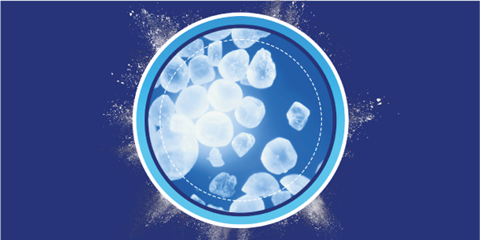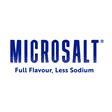Sodium is widely used in food manufacture to enhance flavour, but overconsumption can carry severe health risks, and replacements to date have come with their own problems. So, how can suppliers reformulate to reduce sodium while retaining the flavours consumers love?
A quiet health crisis is taking place related to the overconsumption of sodium and resultant cardiovascular disease, which is estimated to cause around 2 million deaths per year, according to the World Health Organization (WHO).
A growing consensus among the food industry and governments globally suggests that salt reduction is the next major paradigm shift in food manufacturing, and WHO has set a target of reducing global sodium intake by 30% by 2025, estimated to save 7 million lives by 2030. WHO research also found that every US$1 spent on sodium reduction translates to US$12 in healthcare cost savings for treating cardiovascular disease.
The key to achieving this goal is a proactive approach to reducing salt consumption in food manufacturing by reformulating products using low-sodium salt.
However, until now, food manufacturers seeking to reduce their product’s sodium content were forced to embark on an intensive balancing act of adding or taking away flavours to counteract the metallic taste of sodium alternatives.

Reformulation to reduce sodium, previously a significant burden for food manufacturers, can now be an opportunity to align their business models with government policies and consumer demand.
While removing salt from the dinner table is an option for consumers, many food manufacturers do not have that luxury. From a commercial perspective, food manufacturers must create products aligned with consumer tastes. In many respects, the economics of reducing salt in food haven’t made sense even though the health problems associated with overconsumption have been highlighted.
Consumers are conditioned to the salty flavour. For many manufacturers, removing the salt taste simply isn’t plausible.
“Most of the salt in people’s diets comes from prepared foods they’ve purchased, not from salts they add at home when cooking, or from salts they add at the table. There is a real opportunity to provide an ingredient that enables food manufacturers to reduce salt levels,” explains Judith Batchelar, non-executive chair of MicroSalt®.
“If you take too much salt out of foods, they don’t taste quite as good. Consumers reject those products because they’re not as tasty. The challenge is not compromising taste to the point customers reject those products.”
The problems with potassium
So many of what would be termed salt replacers historically were things like potassium chloride rather than sodium chloride, but they have a different flavour profile and that causes all sorts of challenges around taste acceptance. It just didn’t work in all applications,” Batchelar says.
In addition to the metallic taste associated with salt substitutes using potassium chloride, studies have found high-risk individuals can experience dangerous side effects when using salt alternatives.
Excessive consumption of potassium can lead to hyperkalemia, causing fatigue and an irregular heartbeat. People with impaired kidney function are at higher risk of developing hyperkalemia due to difficulty excreting excess potassium from the body.
Potassium can also react adversely with certain forms of medication and cause allergic reactions.
While most people can safely consume salt substitutes containing potassium, far more people are at risk of complications with some existing low-sodium alternatives when compared to MicroSalt, which only contains sodium chloride.
A revolution in reformulation

MicroSalt is at the beginning of what it believes will be a revolution in reformulating products to improve taste, as well as reduce sodium.
The development of MicroSalt’s low-sodium salt crystals may prove to be a tipping point in lowering sodium in food products, reveals Batchelar. Should more food manufacturers align behind government policies to reduce sodium consumption, MicroSalt is well-placed to augment reformulation.
MicroSalt’s patent-protected low-sodium salt contains up to 50% less sodium than traditional table salt – without using metallic-tasting alternatives such as potassium chloride.
MicroSalt tastes like salt because it is salt. The brand doesn’t use metallic-tasting sodium alternatives such as potassium chloride. It uses sodium chloride only. MicroSalt has developed a micron-sized salt crystal that delivers the same salty taste with lower sodium chloride content.
The same salt taste is achieved by the smaller salt crystals dissolving on the tongue quicker than traditional salt crystals. By dissolving faster, MicroSalt’s micron-sized crystals send the full salty taste to the brain’s gustatory cortex with less sodium entering the body.
Having proved this concept by launching a range of salt shakers and SaltMe! crisps stocked in hundreds of retail outlets globally, the rollout to the broader food industry has begun in earnest.

MicroSalt has identified a multitude of applications, including crisps, prepared foods, slurry mixes, seasonings, and bread. Additional development by major global food brands is ongoing, and MicroSalt® is encouraged by results to date.
“On products like salty snacks, where it’s applied topically on a crisp or a snack, MicroSalt’s small particles adhere to the product better than a larger salt particle. Therefore, you don’t waste as much in the manufacturing process. It also addresses one of the biggest customer complaints for snack manufacturers, which is a lack of flavour,” Batchelar says.
MicroSalt is already being used by one of the world’s largest snack food companies to reformulate well-known fmcg products. This company has made repeat orders and more companies are expected to follow suit.
The testing phase of MicroSalt is fascinating. For example, trials in bread found that not only does MicroSalt help to reduce sodium content but also lowers the proofing time, resulting in production efficiencies.
“MicroSalt® does work, and it works universally in different products,” says Batchelar.
With over 35 years of experience at leading UK institutions, including directorships at Sainsbury’s and Safeway, Batchelar believes manufacturers have never had a better opportunity to reformulate recipes using MicroSalt®’s micron-sized salt crystals to reduce sodium.
“Having something that is just salt, but a smaller version of salt will be more acceptable and allows manufacturers, brand owners, and retailers to go again on the salt agenda. I think the timing is right for MicroSalt,” concludes Batchelar.
For more on the challenges of sodium consumption and MicroSalt’s solutions see the video below:
To find out more about MicroSalt® and its applications, visit MicroSalt® Inc’s website on https://microsaltinc.com/home-uk/ or contact Carolina Berardi on cberardi@microsaltinc.com
























